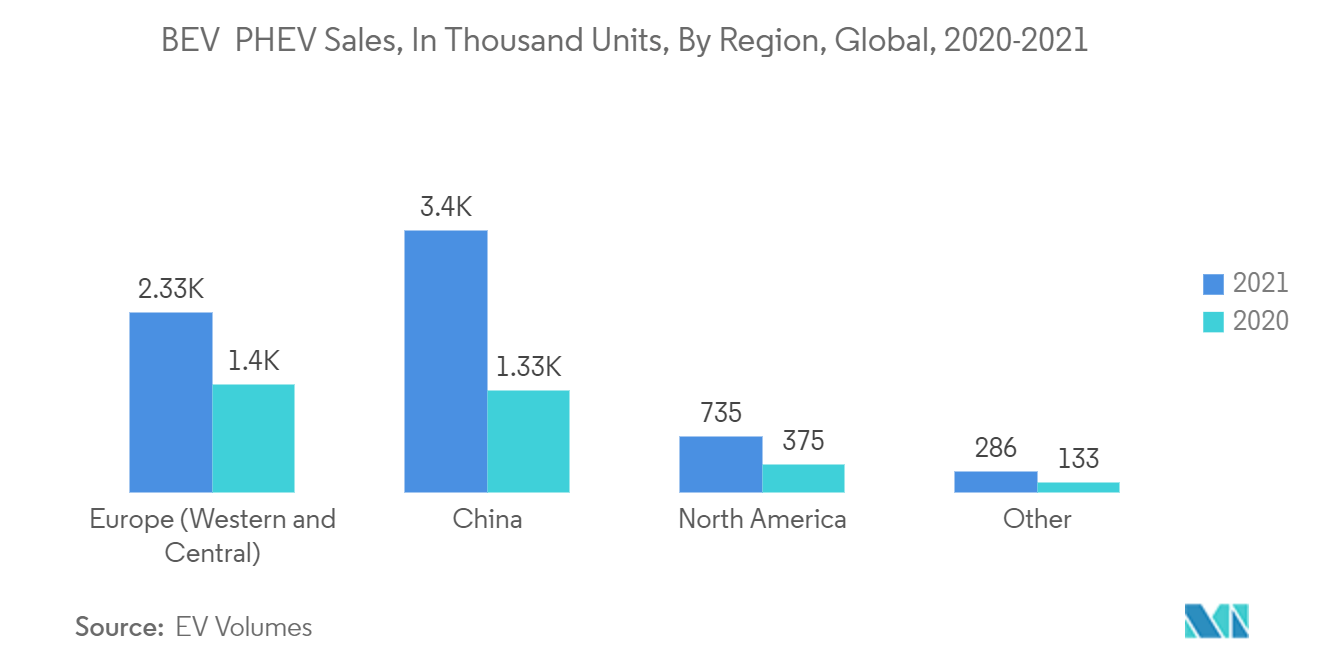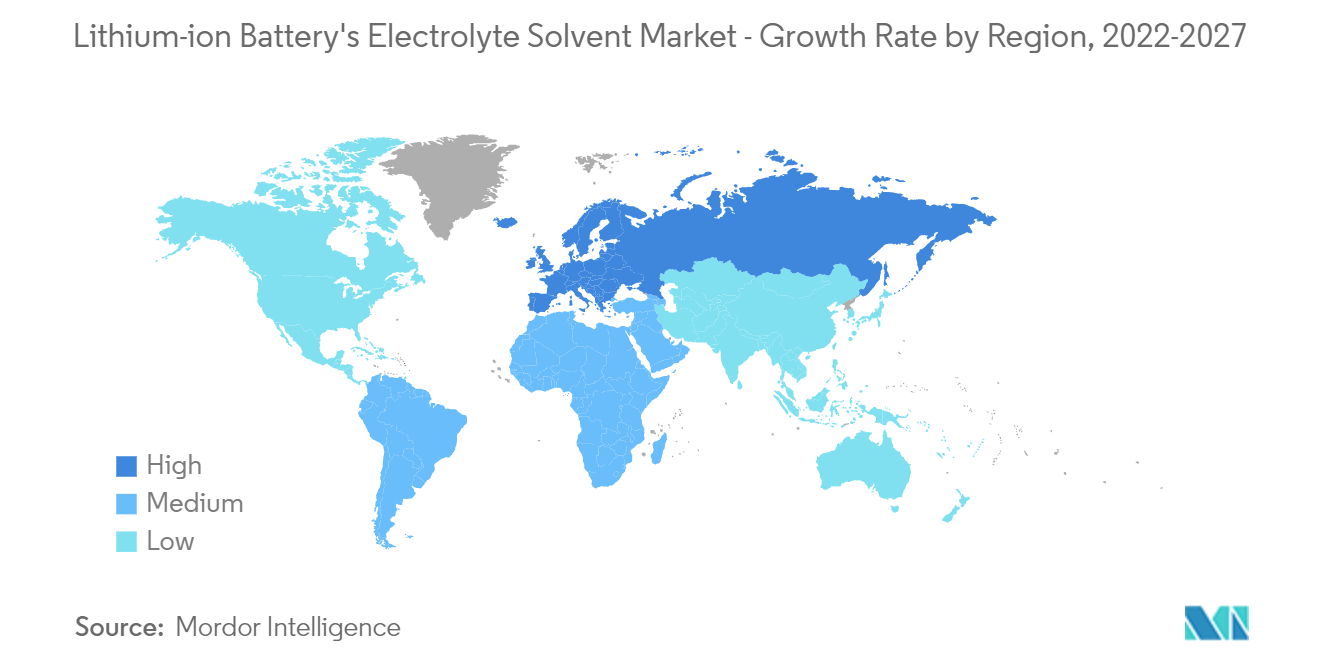Market Trends of Lithium-ion Battery's Electrolyte Solvent Industry
This section covers the major market trends shaping the Lithium-ion Batteries Electrolyte Solvent Market according to our research experts:
Increasing demand from Electric Mobility/Vehicles Applications
- Electric mobility vehicles application is the fastest-growing application of the market studied. Lithium-ion batteries have a high power-to-weight ratio, which is the major advantage that is driving its growth in electric vehicle applications.vThe other advantages, such as high energy efficiency, good high-temperature performance, and low self-discharge, are also playing a part in improving EVs.
- Solvent is used in the batteries to adjust the concentration of the electrolyte, along with the formation of a protective layer between electrolyte and electrons.
- These solvents are mixed to decrease the electrolyte's viscosity and increase the solubility of lithium salts. This increases the mobility of lithium-ions in the electrolyte, resulting in higher battery performance in the vehicles.
- As per the EV Volumes, the global EV (electric vehicles) sales reached 6.75 million units in 2021, registering a growth of 108% compared to 3.24 million sales in 2020.
- Moreover, out of the 6.75 million EVs sold in 2021, 3.4 million EVs were sold in 2021 to mainland China, 2.3 million EVs were sold in Europe, and 0.7 million were in the United States. Moreover, the share of EVs (battery electric vehicles (BEVs) and plug-in hybrid electric vehicles (PHEVs)) in global light vehicle sales was 8.3 % in the year 2021 as compared to 4.2 % in 2020.
- According to IEA, in 2030, global electric vehicle sales are expected to reach 125 million as per the New Policies Scenario (excluding two/three-wheelers).
- Furthermore, As per the EV30@30 Scenario, in 2030, around 70% of the vehicle sales in China are expected to be EVs. Also, half of the vehicles sold in Europe are EVs, along with 37% in Japan, 30% in Canada and the United States, and 29% in India.
- With the high growth of the electric vehicle industry, along with government policy push in various countries, the solvent demand from electric vehicle battery application is expected to post the highest growth rates over the forecast period.

Asia-Pacific Region is Expected to Dominate the Market
- Asia-Pacific region is largest market for lithium-ion battery's electrolyte solvent and is expected to remain the largest market in the forecast period owing to significant demand for lithium-ion battery mainly for the application in automotive and electronics industries majorly form the China, India, and Japan.
- China is the largest car market for electric vehicles in the world. As per the EV Volumes, In China, the electric vehicle (battery electric vehicle (BEVs) and plug-in hybrid electric vehicle (PHEVs)) sales accounted for 3,396 thousand units, witnessing a growth of 155% compared to 1,331 thousand units, in 2020.
- Moreover, China has invested at least USD 60 billion to support the EV industry and it is pushing an ambitious plan to transition to all-electric or hybrid cars by 2035. China has predicted that approximately 50% of all cars sold by 2035 will exclusively be EVs.
- As per India Energy Storage Alliance (IESA), the Electric Vehicle (EV) industry in India is expected to expand at a CAGR of around 36% by 2030.
- Moreover, The Indian government has created momentum through its Faster Adoption and Manufacturing of (Hybrid and) Electric Vehicles schemes that encourage and, in some segments, mandate the adoption of electric vehicles (EV), to reach 30% EV penetration by 2030.
- The scheme creates demand incentives for EVs and supports the deployment of charging technologies and stations in urban centers.
- Although Japan plans to phase out petrol and diesel cars by the mid-2030s and is a powerhouse producer of hybrid cars, consumers have a limited choice when it comes to BEVs.
- Moreover, Japan also announced that it would stop the sale of new gasoline-only cars by 2035.
- The Japanese government is facing pushback from Toyota, which said last year that 'the current business model of the car industry is going to collapse' if the government moved too quickly. Toyota has no plans to mass-produce a BEV vehicle until 2025, although it is developing fuel-cell electric vehicles (FCEVs) that run on hydrogen.
- According to Japan Electronics and Information Technology Industries Association (JEITA), as of December 2021, the global production by the Japanese electronics and IT industry, including electronic equipment, components, devices, and others was estimated to register a growth of 8% year-on-year in 2021 to JPY 37,319.4 billion (~USD 281.09 billion) and the industrial production is forecasted to JPY 38,015.2 billion (~USD 286.33 billion) in 2022, with an estimated growth of 2% year-on-year.
- Thus, based on the aforementioned factors, Asia-Pacific is expected to dominate the global market over the forecast period.

